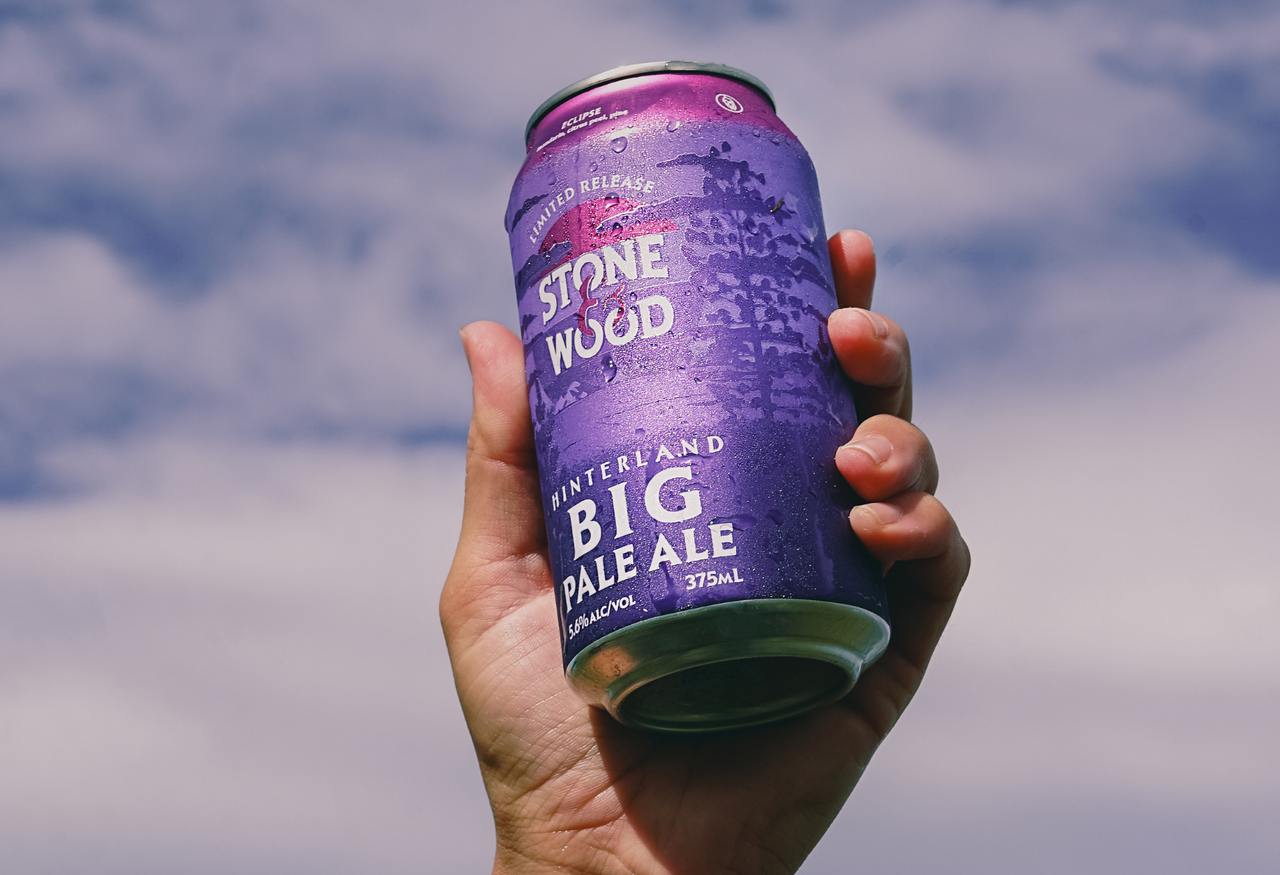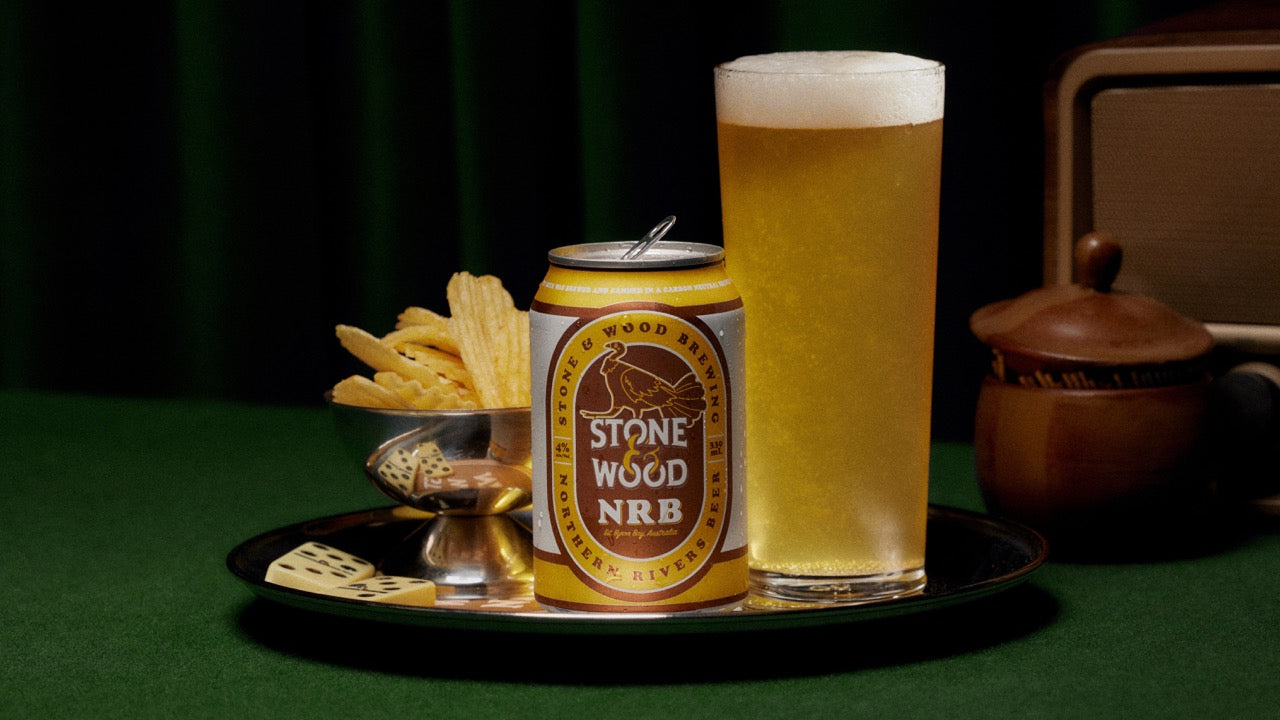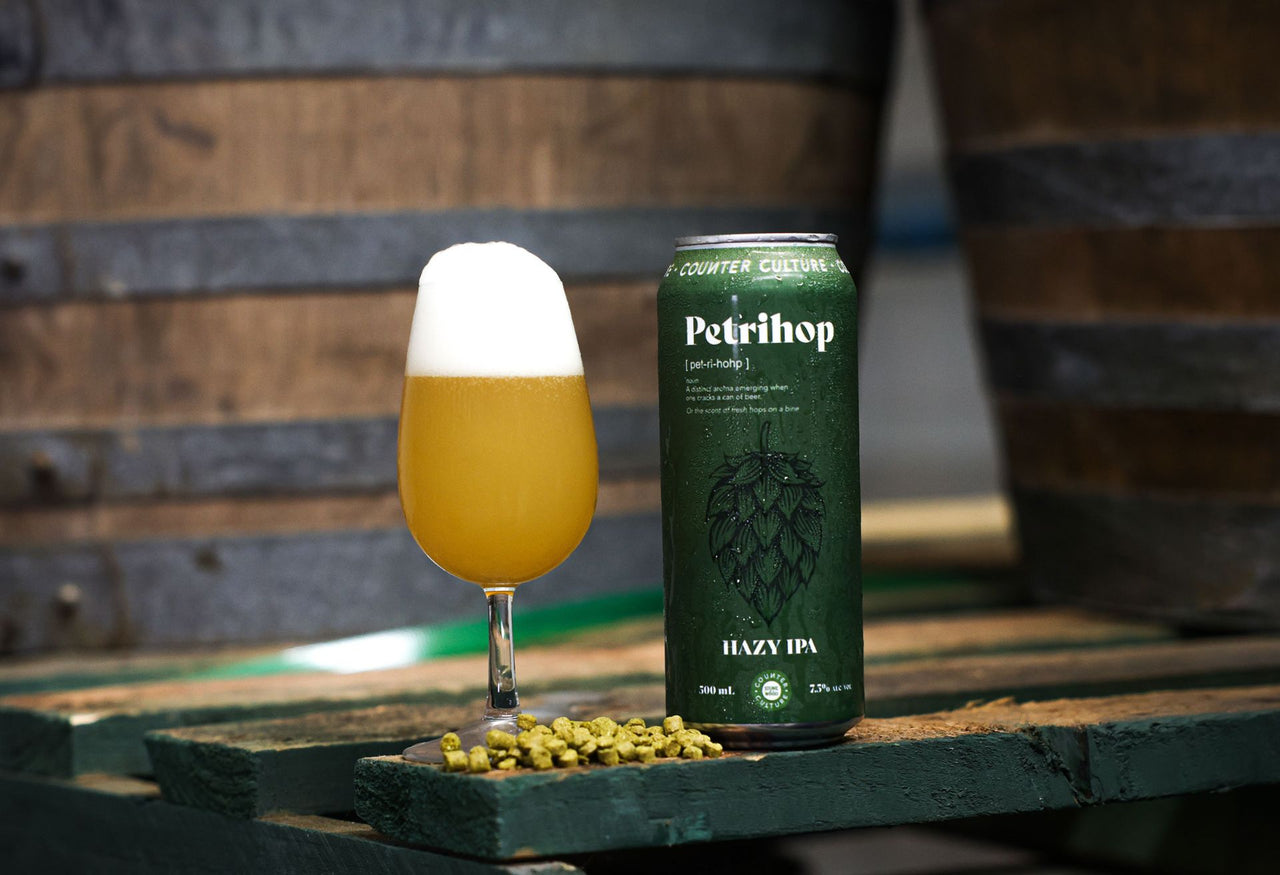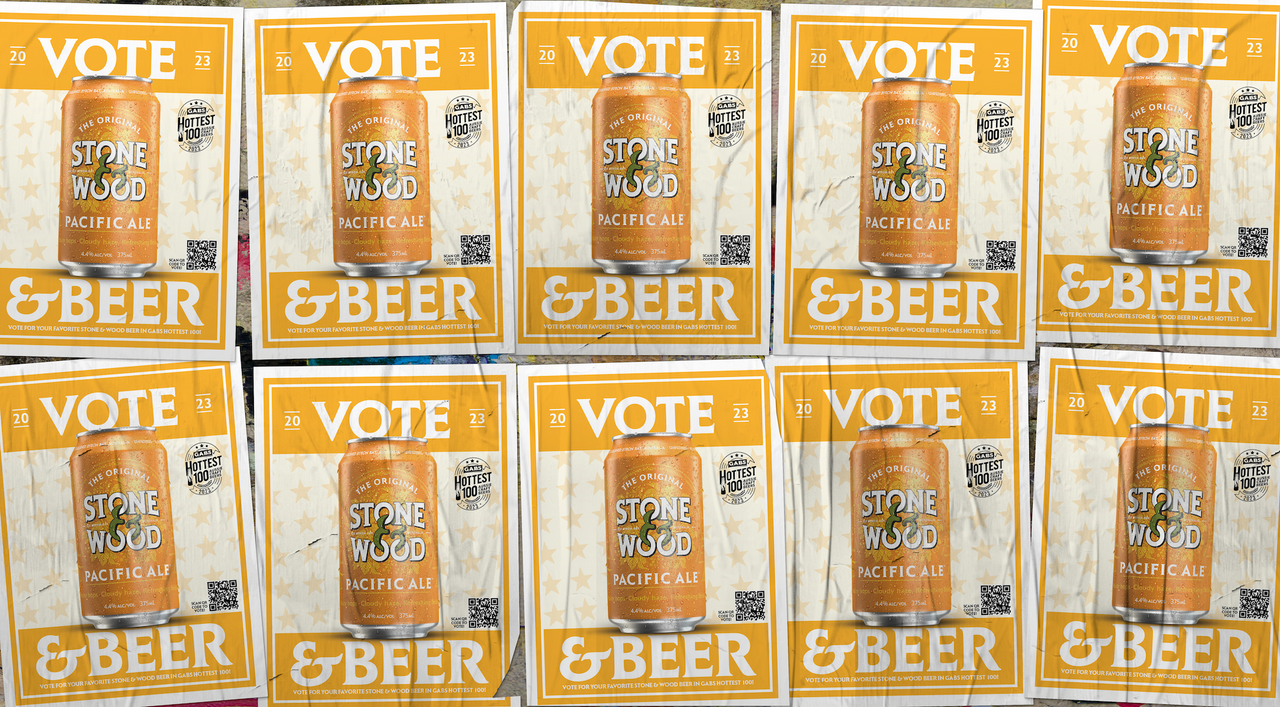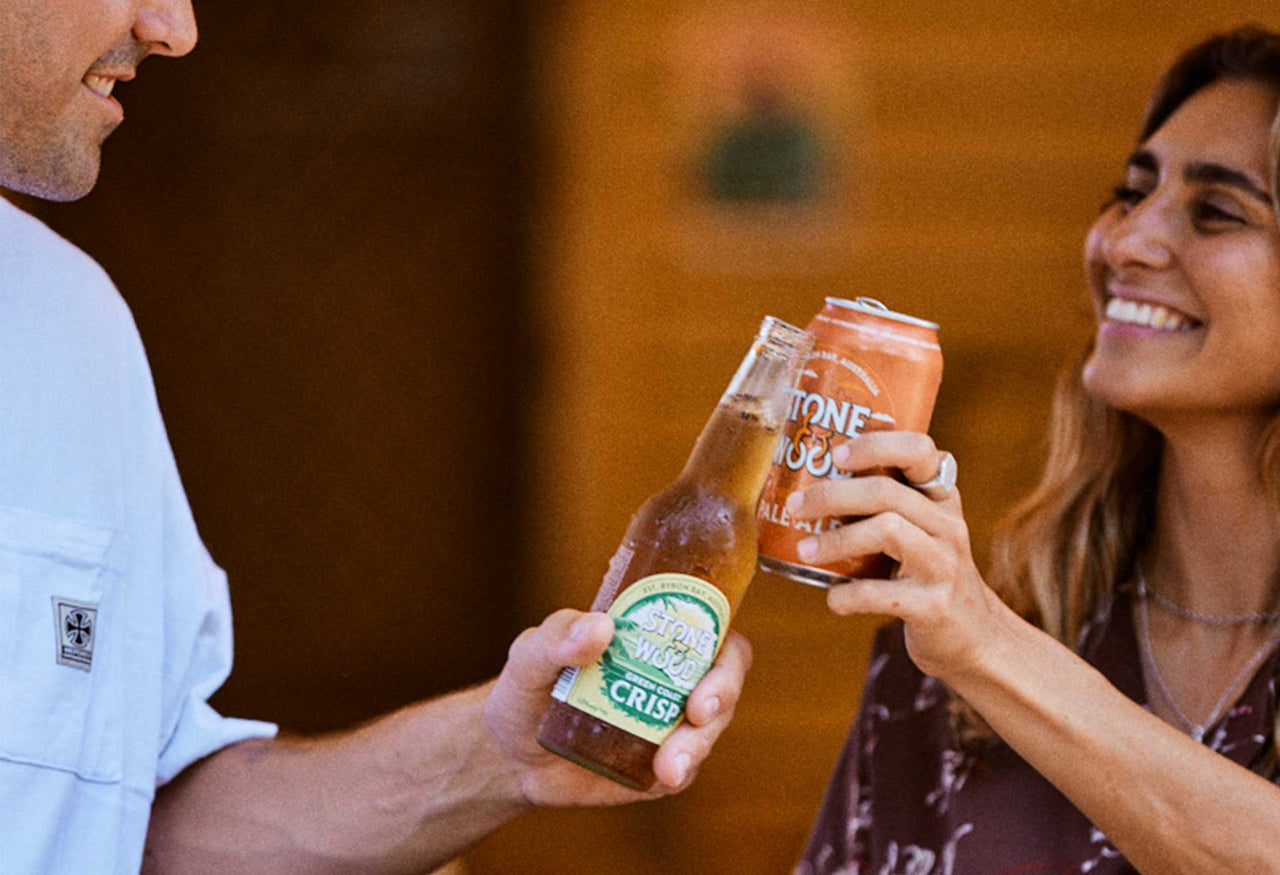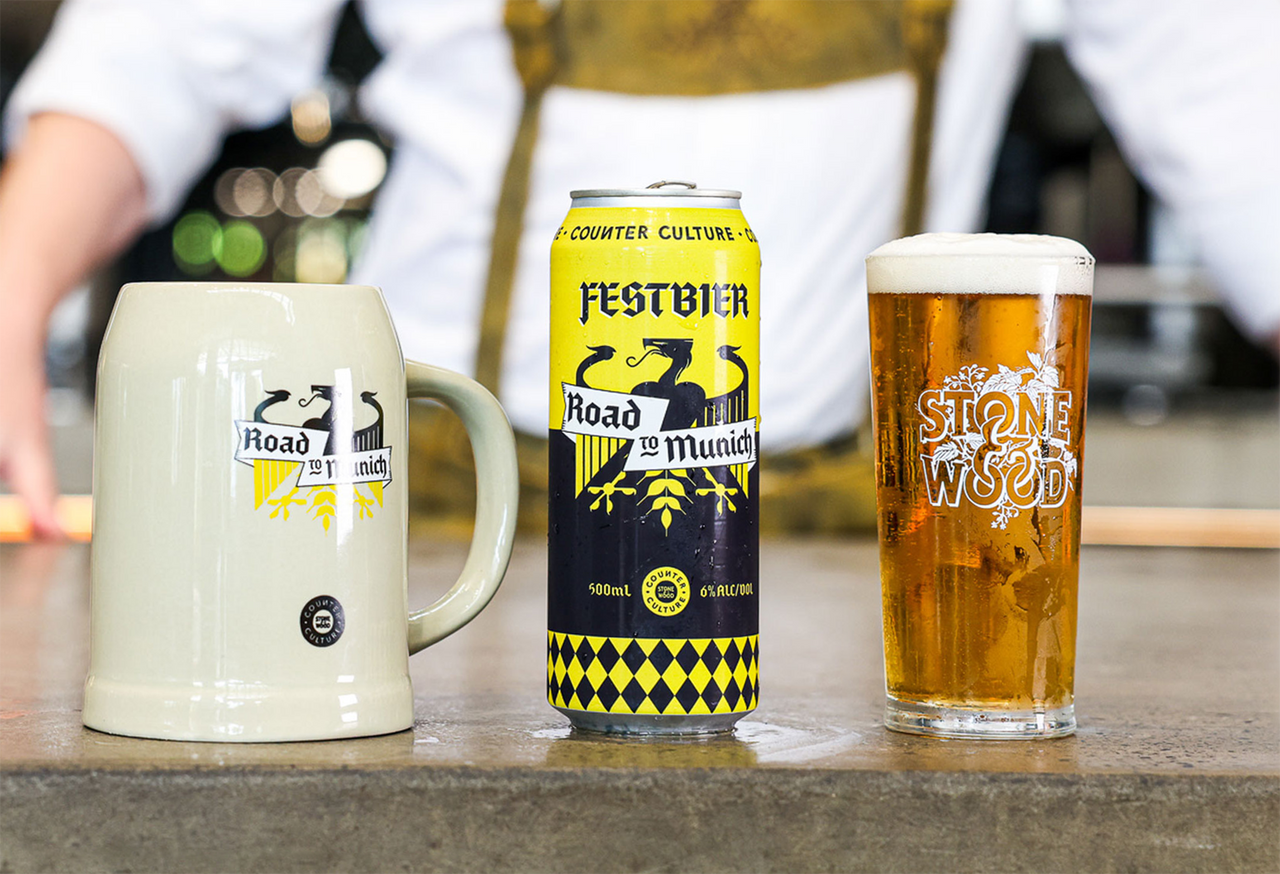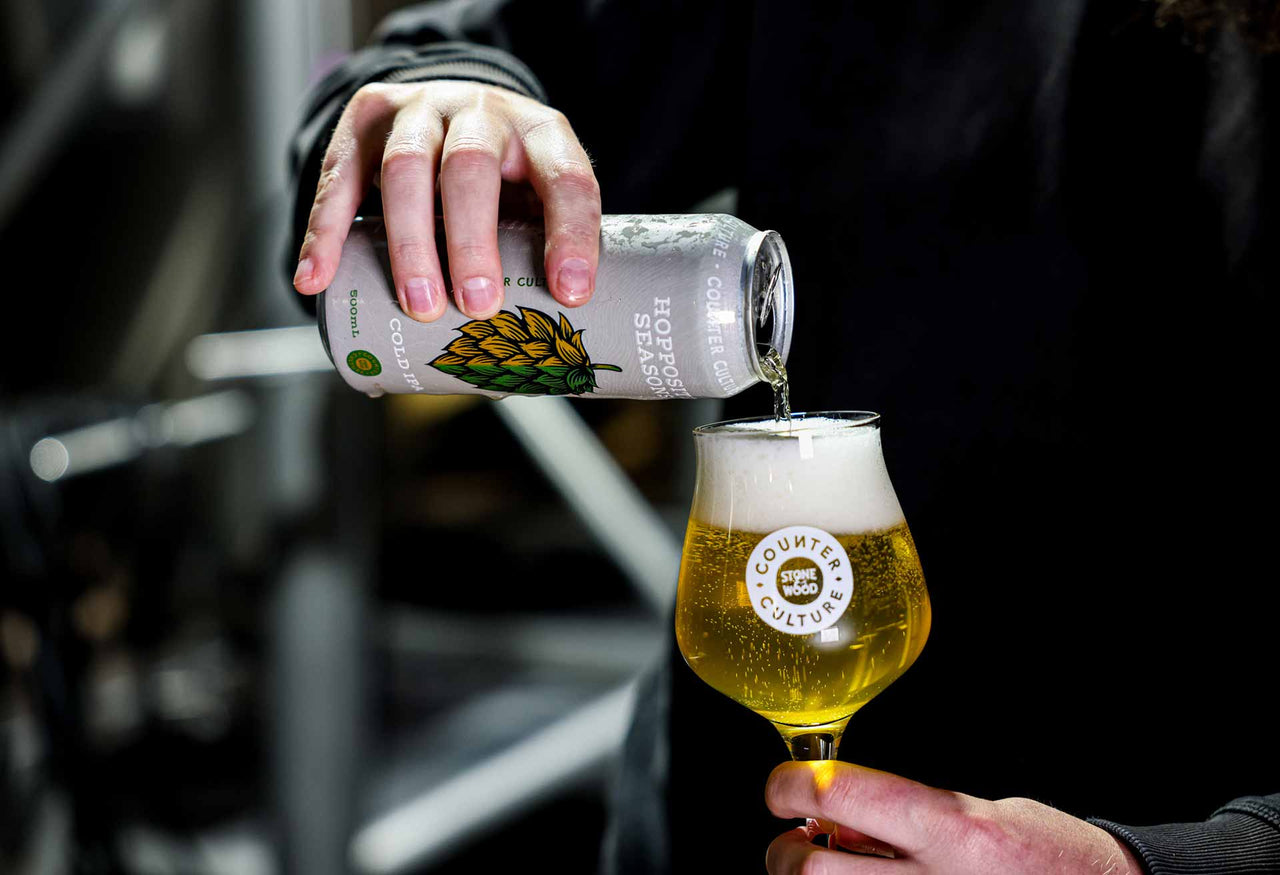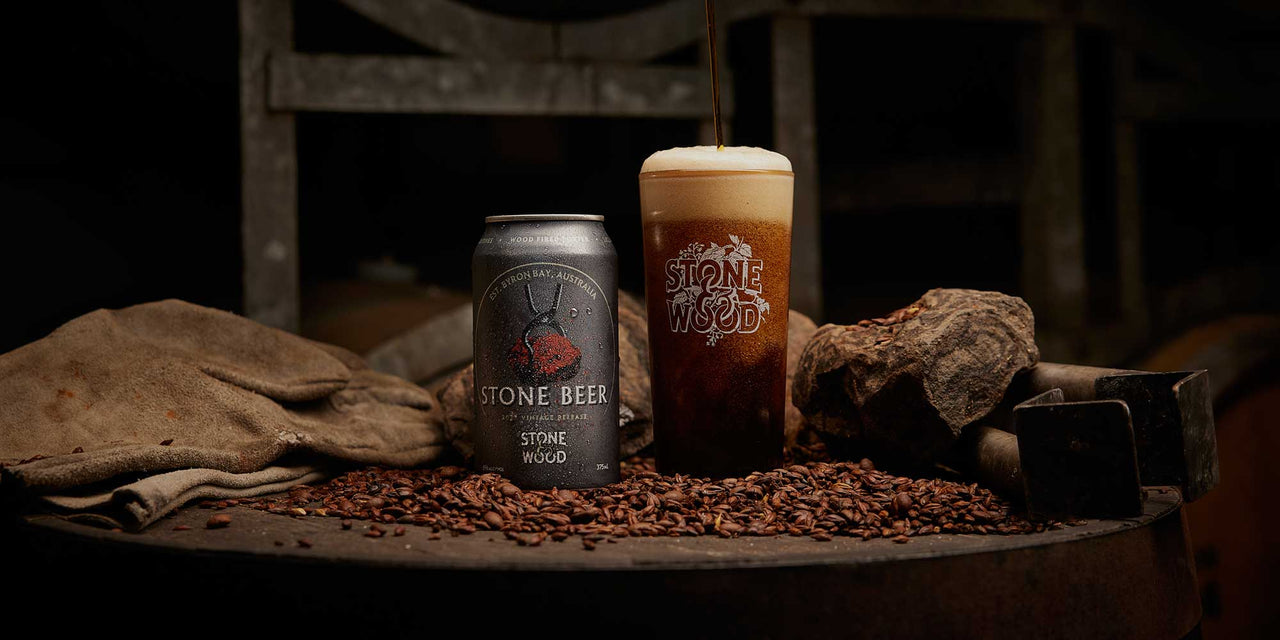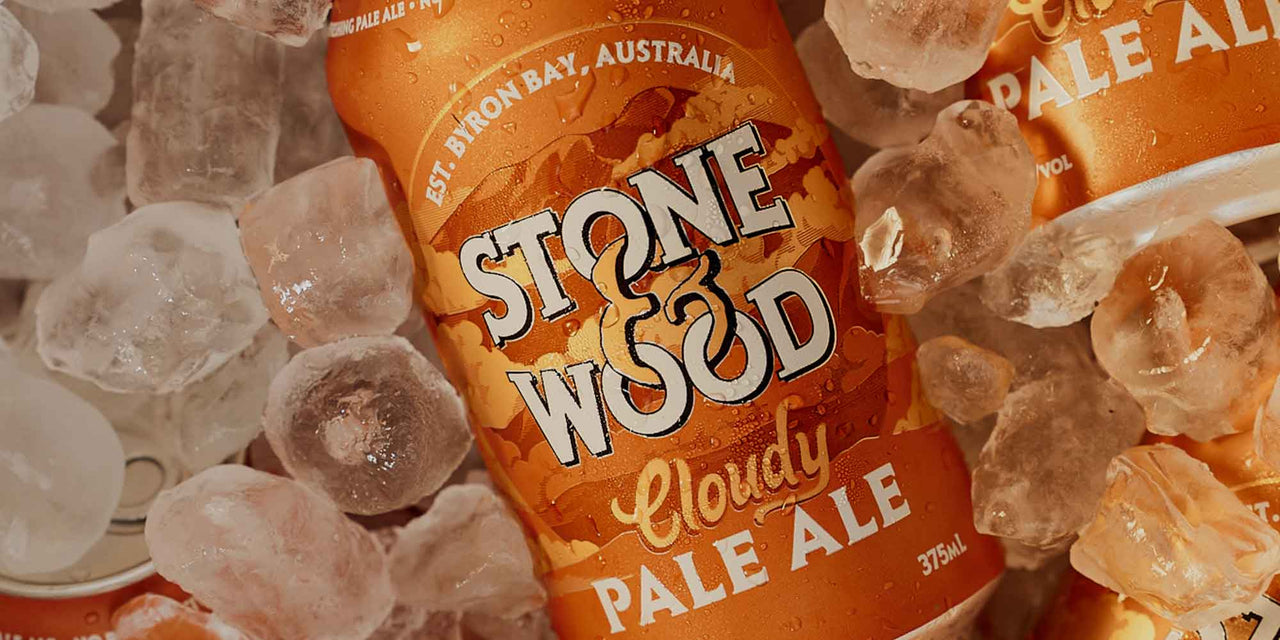We brew beer that's simply good to drink...

HOW WE BREW OUR BEER
BEER OVERVIEW
The basic ingredients of beer are water; a starch source, such as malted barley, able to be fermented (converted into alcohol); a brewer’s yeast to produce the fermentation; and a flavouring, such as hops, to offset the sweetness of the malt. A mixture of starch sources may be used, with a secondary saccharide, such as maize (corn), rice, or sugar, often being termed an adjunct, especially when used as a lower-cost substitute for malted barley.
MILLING
The malted barley and most other cereal grains must be crushed to expose the starch inside, enabling the solubilization in hot water of the endosperm of the grain. Milling is generally carried out in such a way as to avoid damaging the husk of the barley malt. This is because the husk contains several components detrimental to beer quality, but mainly because the husk acts as a filtration medium during the wort separation process. The resulting crushed malt is known as grist.
MASHING
The grist is blended together with hot water (sometimes known as “brewing liquor”) in a mash vessel, creating a porridge called the mash. In a modern brewery the mash vessel will be jacketed, steam heated, and fitted with a stirring apparatus. The standard “optima” for enzymatic conversion of malt starches is approximately 65°C. Most of the enzyme action responsible for breaking barley starch down into fermentable and nonfermentable sugars ceases early during wort collection. Either the mash will be heated to a temperature that denatures the enzymes (this is called “mash-off” at approximately 76.5°C) or sparging (rinsing) at similar temperatures will accomplish the same goal. Any enzymes that remain active will later be denatured by heat in the kettle.
Once the endosperm of the barley is solubilized into sugars, then the wort must be recovered from the spent grains. The entire mash is transferred to a lauter tun, which is a specialized vessel designed to optimize the conditions for wort separation. It is essentially a large sieve that holds grain husk in place while the wort is rinsed away into the kettle. The separated spent grain is usually sold as cattle feed.
BOILING
Once the wort is collected from the spent grains, it must be boiled. Boiling leads to the isomerization and subsequent solubilization of the bitter substance alpha acid from the added hops. Boiling the wort also essentially sterilises it, rendering it free from any bacterial contamination. Boiling completely ceases the enzyme activity and fixes the carbohydrate composition of the wort and hence the dextrin content of the final beer. These compounds form a solid precipitate called “trub,” which is removed from the wort prior to fermentation.
WHIRLPOOL AND WORT COOLING
The small particles such as spent hop pellets and precipitated protein are separated using a vessel known as a whirlpool. The whirlpool works by pumping the wort into the vessel using a tangential inlet pipe about one-third of the way up the side of the vessel. This causes the wort to spin, and the forces acting in the rotating liquid cause solid particles to collect in a mound in the middle of the vessel bottom. Clear wort can then be drawn from an outlet close to the edge of the vessel bottom.
The wort is chilled prior to adding yeast for fermentation by passing the wort through a heat exchanger which uses cold water to chill the hot wort down to temperatures suitable for the addition of yeast. In the case of ales, that temperature is usually between 15°C and 20°C, whereas for lager styles it will regularly be as cold as 7°C to 14°C.
FERMENTATION
Fermentation is the process whereby “sugars” are converted by yeast to alcohol, carbon dioxide, and heat. In the brewing of most traditional beer, the sugars are derived mainly from malted barley, although other cereal sources and other plant sugars can also be used. These materials also contribute proteinaceous substances, which in concert with the sugars and added flavouring agents, notably hops, generate the alcohol, flavours, and aromas that we know and love as beer.
The fermentation temperature is critical in controlling the outcome of fermentation and has a significant impact on the development of flavour. Ales are generally fermented in the temperature range of 16°C to 22°C using top-fermenting strains, whereas lagers are fermented much cooler, 7°C–14°C, using bottom-fermenting strains. Some beers, particularly Belgian styles, may be fermented very warm, with temperatures reaching almost 32°C for some farmhouse ales (saison). The combination of specific yeast strains and temperature generates very distinctive flavour profiles in the beers, with the ales and particularly stouts generally producing fruity/estery characters, whereas the lagers feature much lower ester levels, enabling more of the delicate pale malt characters and hop aromas to manifest on the nose. Fermentation is an exothermic process in that heat is produced and control of the heat generated is essential in fermentation control. Brewing vessels are equipped with cooling equipment of varying levels of sophistication, designed to effect cooling at the appropriate times in fermentation. Cooling is important in moderating yeast flocculation in that it tends to encourage yeast to flocculate. This is necessary at the end of fermentation to facilitate yeast separation.
DRY HOPPING
Dry Hopping, the addition of hops to beer in the fermenting, conditioning, or serving vessel. For many styles of beer, hops are added throughout the brewing process. The purpose of dry hopping is to infuse beer with additional fresh hop flavour and aroma. Dry hopping is a cold infusion technique that not only intensifies hop aromatics in beer but also adds aromatics that are substantially different from those achieved by late hopping. international bitterness unit values may remain unchanged.
MATURATION
Maturation includes all transformations between the end of primary fermentation and the removal of yeast from the beer in preparation for packaging. Although most beer fermentations are technically complete within 3 to 10 days, the vast majority of beers are not yet ready to drink when the yeast finishes its primary work of metabolizing sugars. This is because fermentations tend to produce flavours that are considered undesirable in finished beer. For this reason, beer must undergo some form of maturation to become palatable. Maturation is also referred to variously as conditioning, lagering, and ageing.
CENTRIFUGE
In a brewery centrifuge, which may also be called a separator or a decanter, these same principles are applied to a liquid — wort or beer. The liquid is laden with various types of suspended particulate, including yeast, trub, and hop residue, each with a different density. When a centrifuge spins the liquid within a round chamber, at a given rotation speed, eventually the heavier components of the liquid, notably trub and yeast, because they experience greater centrifugal forces, will move closer to the chamber’s outer wall. Meanwhile, the lightest components, including water and alcohol, will stay closer to the centre axis of the rotation chamber.
A beer centrifuge employed before packaging can reduce the beer’s turbidity by separating many or most of the yeast cells from the clear beer. This is particularly useful if the beer is to be packaged unfiltered, but the yeast does not flocculate sufficiently to the bottom of the fermenter. It is possible to link the centrifuge to an optical sensor that measures the turbidity of the beer; properly used, this setup can be used to adjust haze or yeast cell counts in the final package. Likewise, a centrifuge can remove some of the yeast between the end of primary fermentation and the beginning of secondary fermentation or before lagering.
BRIGHT BEER TANK
A Bright Tank is a dish-bottomed pressure-rated temperature-controlled tank used to hold beer in preparation for packaging. The term “bright” refers to “bright beer,” beer that has been rendered bright (clear) by filtration, centrifugation, fining, and/or maturation. In most breweries, beer will be filtered after leaving a uni-tank or lagering vessel and be directed into a bright tank. If the beer is to be force-carbonated, then the beer may be carbonated in-line, under pressure, between the fermenter or lagering tank and the bright tank. In this case, the beer should arrive at the bright tank with full carbonation. For in-tank carbonation (or adjustments), the bright tank will be fitted with a carbonation stone, a device through which carbon dioxide is forced, dispersing fine bubbles into the liquid for fast dissolution.
PACKAGING
The bottles and cans are then fed into the filler, a large rotary device connecting the bottles to the bowl containing the beer ready for filling. But before beer is filled into the bottles, the air is sucked out of them to remove the harmful oxygen. This may happen either once or twice — single or double pre-evacuation — which is always followed by a pre-pressurisation with pure CO2 that serves to both provide a “beer friendly” atmosphere in the bottles and aligns the pressure in the bottle with the one in the tank, making sure that the subsequent filling can take place without the beer foaming. When the bottles are full, they enter the rotary capper where caps/crown are applied to the bottle mouths and squeezed tightly onto them.
Draught Beer. Beer racked into kegs and served on draught is generally considered to be the optimal method to showcase the brewer’s art.
Modern single-valve stainless kegs — coupled with state-of-the-art cleaning and filling systems — allows beer to be aseptically packaged with very little oxygen pickup or ingress. The stainless keg eliminates degradation from light, as well as potential oxygen ingress through bottle cap seals or flavor influence from can liners that is possible with other beverage packaging methods. When dispensed through a properly maintained and balanced draught system, this allows for optimal brewery-fresh beer to be delivered to the glass. Although draught beer has the potential to deliver the best drinking experience, it can easily be ruined with improper storage and handling through a poorly designed or poorly maintained dispensing system or improperly cleaned glassware.









